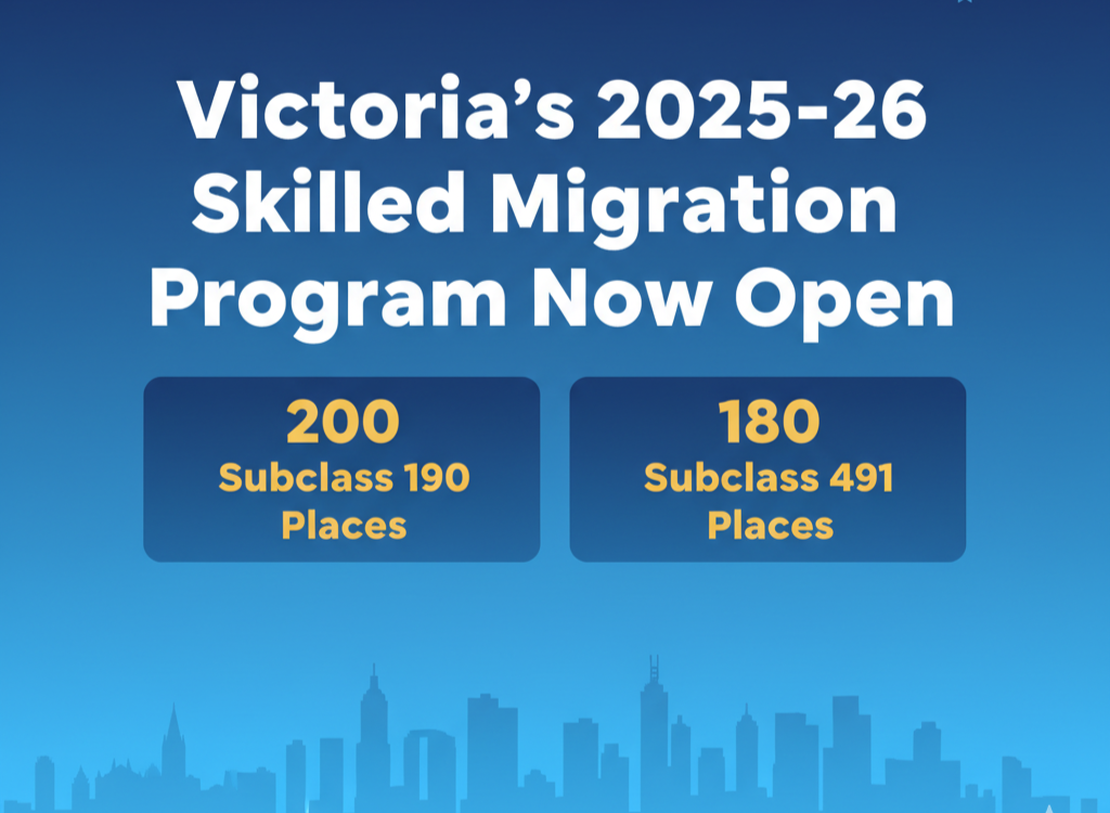Australia’s Minister for Home Affairs unveiled the much-anticipated Migration Strategy on December 11, 2023, marking a significant shift in the country’s approach to immigration. This comprehensive strategy introduces transformative changes designed to address current challenges while positioning Australia as a global leader in attracting top talent.
Executive Summary
The new Migration Strategy represents the most significant overhaul of Australia’s immigration system in decades. Key highlights include:
- Introduction of the National Innovation Visa (NIV) to replace the Global Talent Visa
- Major reforms to the Temporary Graduate visa (485) program
- Enhanced regional migration pathways
- Streamlined student visa processes
- Strengthened integrity measures across all visa categories
Key Changes to Temporary Work Visas
Temporary Skill Shortage (TSS) Visa Reforms
The government has announced several changes to the TSS visa (subclass 482) program:
Salary Threshold Increases:
- The Temporary Skilled Migration Income Threshold (TSMIT) will increase to $70,000 from mid-2024
- This represents a significant jump from the current threshold of $53,900
- The increase aims to ensure temporary skilled workers are paid competitive wages
Pathway to Permanency:
- Enhanced pathways for TSS visa holders to transition to permanent residency
- Reduced waiting periods for eligible applicants in certain occupations
- Streamlined assessment processes for employer nominations
Working Holiday Maker Program Enhancements
The Working Holiday Maker program will see several improvements:
- Extended eligibility for third-year visas in regional areas
- Expanded list of eligible work activities
- Improved conditions for agricultural and tourism sector work
Student and Graduate Visa Changes
Temporary Graduate Visa (485) Major Reforms
The 485 visa program faces significant changes designed to better align graduate outcomes with Australia’s economic needs:
Duration Changes:
- Bachelor’s degree holders: Duration reduced from 2 years to 18 months
- Master’s degree holders: Remains at 2-3 years depending on qualification level
- PhD holders: Continues to receive 4 years
Qualification Requirements:
- Stricter requirements for qualifying Australian study
- Enhanced English language proficiency requirements
- Focus on courses with strong employment outcomes
Regional Graduate Program:
- Extended duration for graduates who study and work in regional areas
- Additional pathways for regional graduates to achieve permanent residency
- Incentives for graduates to remain in regional communities
Student Visa Integrity Measures
New measures to strengthen the integrity of the student visa program include:
- Genuine Student Test: Replacing the current Genuine Temporary Entrant requirement
- Enhanced English Requirements: Higher entry standards for student visa applicants
- Work Rights Review: Potential changes to work hour limitations during study
- Course Quality Measures: Stricter oversight of education provider standards
Points-Tested Skilled Migration Updates
SkillSelect Modernization
The SkillSelect system will undergo significant improvements:
Enhanced Ranking System:
- More sophisticated points allocation considering regional study and work experience
- Premium points for graduates from priority fields
- Additional recognition for Australian qualifications and experience
Priority Processing:
- Fast-track processing for applicants in critical skill shortage areas
- Prioritization of candidates with job offers in regional areas
- Enhanced processing for healthcare and education professionals
State and Territory Nomination Programs
Significant changes to state and territory nomination programs include:
Allocation Increases:
- Higher nomination allocations for states demonstrating strong settlement outcomes
- Performance-based allocation adjustments
- Enhanced cooperation between federal and state governments
Criteria Refinements:
- Alignment with local labor market needs
- Focus on long-term settlement and integration outcomes
- Streamlined application processes for nominated candidates
Regional Migration Initiatives
Designated Regional Areas Expansion
The government will review and potentially expand designated regional areas:
- Population Growth Consideration: Areas experiencing rapid growth may lose regional status
- Economic Needs Assessment: Regional designation based on local economic requirements
- Infrastructure Capacity: Consideration of infrastructure and service capacity
Regional Visa Program Enhancements
Subclass 491 (Regional Skilled Work) Improvements:
- Clearer pathways to permanent residency through subclass 191
- Enhanced support services for regional settlement
- Improved monitoring and compliance frameworks
Regional Employer Nomination Scheme:
- Expanded occupation lists for regional employers
- Reduced regulatory burden for regional businesses
- Enhanced concessions for genuine regional employers
Global Talent and Business Innovation Programs
National Innovation Visa (NIV) Introduction
The NIV will replace the Global Talent Visa program with enhanced features:
Target Groups:
- Entrepreneurs with proven business success
- Investors meeting significant investment thresholds
- Researchers in priority innovation areas
- Tech Talent in emerging technology sectors
Key Benefits:
- Permanent Residency Pathway: Direct access to permanent residency
- Family Inclusion: Comprehensive family migration options
- Fast Processing: Priority processing for qualified applicants
- Work Flexibility: Unrestricted work rights upon arrival
Business Innovation and Investment Program Reforms
Investment Thresholds:
- Increased minimum investment amounts across all Business Innovation and Investment visa categories
- Enhanced due diligence requirements for source of funds
- Stronger focus on genuine business activity and job creation
Compliance Monitoring:
- Enhanced monitoring of business and investment activities
- Regular reporting requirements for visa holders
- Stronger penalties for non-compliance
Implementation Timeline
Phase 1 (Early 2024)
- Student Visa Changes: Implementation of Genuine Student Test
- English Requirements: Enhanced language requirements take effect
- TSS Salary Increases: TSMIT increase to $70,000
Phase 2 (Mid 2024)
- NIV Launch: National Innovation Visa program commencement
- 485 Visa Changes: New duration and eligibility requirements
- SkillSelect Updates: Enhanced points system implementation
Phase 3 (Late 2024/Early 2025)
- Regional Program Enhancements: Full implementation of regional initiatives
- Business Visa Reforms: Complete rollout of investment program changes
- Performance Review: Initial assessment of strategy effectiveness
Impact on Current Visa Holders
Existing Application Processing
Grandfathering Arrangements:
- Most existing applications will be assessed under current rules
- Limited retroactive application of new requirements
- Clear communication of applicable rules for pending applications
Transition Support:
- Dedicated support services for affected visa holders
- Information sessions and guidance materials
- Professional development programs for migration agents
Planning Your Migration Journey
For Prospective Applicants:
- Early Assessment: Evaluate your eligibility under both current and new rules
- Strategic Timing: Consider optimal application timing based on implementation phases
- Skill Development: Focus on developing skills in priority areas
- Regional Considerations: Explore regional opportunities for enhanced pathways
Professional Services and Support
Migration Agent Role Evolution
The changes emphasize the importance of professional guidance:
Enhanced Expertise Requirements:
- Deeper understanding of complex new pathways
- Specialized knowledge of regional programs
- Investment and business migration expertise
- Updated continuing professional development requirements
Client Advisory Services:
- Comprehensive migration planning
- Business investment structuring advice
- Regional settlement support services
- Ongoing compliance monitoring
Economic Impact and Projections
Labor Market Alignment
The strategy aims to better align immigration with economic needs:
Skills Gap Addressing:
- Priority processing for healthcare professionals
- Enhanced pathways for aged care workers
- Technology sector talent attraction initiatives
- Regional workforce development programs
Economic Growth Projections:
- Estimated contribution of $25 billion to GDP over 10 years
- Creation of 180,000 additional jobs
- Enhanced productivity through skilled migration
- Regional economic development stimulus
Long-Term Vision and Goals
2030 Migration Targets
Australia’s migration goals for 2030 include:
Population Growth Management:
- Sustainable population growth aligned with infrastructure capacity
- Regional population distribution improvements
- Enhanced settlement outcomes and community integration
Economic Competitiveness:
- Maintaining position as a top destination for global talent
- Innovation ecosystem development through strategic migration
- Enhanced international education sector sustainability
Challenges and Considerations
Implementation Risks
System Capacity:
- Processing capacity for increased application volumes
- Training requirements for departmental staff
- Technology system upgrades and integration
Stakeholder Adaptation:
- Education sector adjustment to new requirements
- Employer adaptation to changed visa conditions
- Migration agent professional development needs
Monitoring and Evaluation
Performance Metrics:
- Regular assessment of policy effectiveness
- Economic impact measurement and reporting
- Settlement outcome tracking and analysis
- Stakeholder feedback integration processes
Conclusion
Australia’s Bold New Migration Strategy represents a comprehensive reimagining of the country’s approach to immigration. While the changes bring complexity and adjustment challenges, they also create new opportunities for skilled migrants, students, and investors.
The strategy’s focus on innovation, regional development, and economic alignment positions Australia to compete effectively for global talent while addressing domestic workforce needs. Success will depend on effective implementation, stakeholder adaptation, and ongoing refinement based on outcomes.
For prospective migrants, the key to navigating these changes lies in early planning, professional guidance, and strategic positioning to take advantage of new pathways as they become available.
Need Professional Guidance?
The complexity of these changes makes professional advice more valuable than ever. Our team at Wisekangaroo specializes in helping clients navigate Australia’s evolving migration landscape. Contact us to discuss how these changes might impact your migration plans and explore the best pathways for your unique circumstances.
Stay informed about the latest developments and ensure your migration strategy aligns with Australia’s new direction for attracting and retaining global talent.





